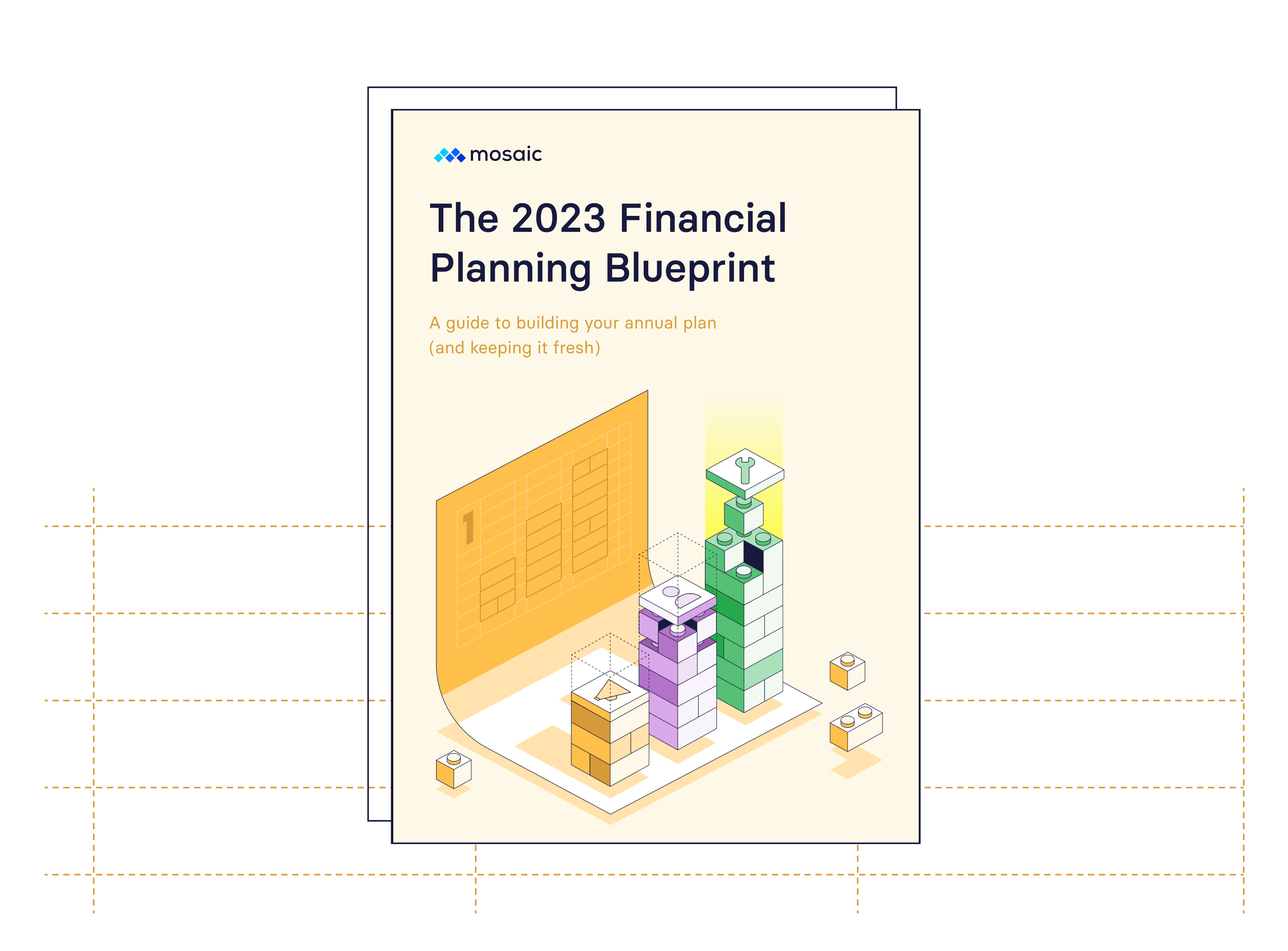There are three Cs that define the best headcount planning processes — continuous, collaboration, and consistency.
While the bulk of your headcount planning effort might come in the traditional annual planning process, high-growth companies can’t rely on that plan for the long term. Circumstances are constantly changing, and the most strategic finance functions partner closely with department heads to keep plans updated at least on a monthly and quarterly basis throughout the year.
But if it were so easy to make headcount planning a collaborative, consistent, and continuous effort, every team would do it. If you want to take the pain and frustration out of headcount planning, this guide will help.
Table of Contents
What Is Headcount Planning?
Headcount planning (and future workforce planning more broadly) is the process of assessing your current workforce and determining the best path forward for staffing future needs that will scale the organization.
But traditional finance education and experience don’t prepare you to understand the ins and outs and other departments. You don’t necessarily know how different parts of the engineering department work together to execute on the product roadmap. And you don’t necessarily know the nuances of the company’s sales team. All the more reason to nail down a collaborative headcount planning process.
Why Is Headcount Planning Important?
Headcount planning is important because workforce-related costs are typically the single largest expense for a business — especially in SaaS, where headcount can comprise upwards of 70% of total spend.
Because workforce expenses make up so much of your total spend, getting headcount planning processes right can make or break the overall efficiency of your business.
A continuous, collaborative, and consistent headcount planning process will help you overcome many of the common frustrations that come with the exercise. Getting it right means:
Aligning Your Business on a Single Source of Truth
Building your headcount plans in a way that everyone in the business — not just finance — can consume and understand is critical. A strong process creates a single source of truth that eliminates any confusion around open heads and forecasted new hires.
Refreshing Headcount Plans According to the Latest Information
A strong headcount planning process means developing and maintaining the forecast continuously. Don’t just wait for annual planning or quarterly board meetings to make incremental budgeting changes.
Keeping Your Ratios in Order
Inconsistent headcount planning can lead to mismanagement of workforce ratios and succession planning. An effective process accounts for those critical ratios to ensure you’re hiring the right number of people in the right roles while also safeguarding against attrition.
The 6 Essential Steps of Headcount Planning
Every company’s specific headcount planning process is unique. However, the following essential steps will put you on the right track to maximizing forecast accuracy and efficiency.
1. Start with Top-Down and Bottom-Up Backcasting
Every headcount planning process should start with backcasting — working backward from business goals to come up with the requirements to reach them.
There are two angles you can take:
- Top-down. Start with business objectives that come from leadership. What are the company’s growth goals and initiatives for the next year or three years? What are the current constraints for getting there and how do you fill skills gaps?
- Bottom-up. Approach headcount plans at the department level first. For example, what assumptions do you have around sales rep quota attainment and ramp rate? Given those assumptions, how many sales reps do you need to hit revenue targets? And how many customer success managers will you need to handle the increased customer count?
Combine these two angles to create a strong foundation for the headcount planning process. Knowing how department-level growth plans and goals map to company-level goals will give you a common language with everyone in the business to get this process right.
2. Understand the Workforce Planning Ratios in Your Business
Proactivity and curiosity go a long way toward building the trust and understanding needed for collaboration and determining what the necessary steps in strategic workforce planning for your organization are.
Once you have established a first-class understanding of how different teams and departments work together, you can begin to assess headcount-driven dependencies and focus more on strategic resource planning. This is where partnering with human resources can help. Because HR teams are so close to the org chart side of headcount planning, they’ll be able to help you understand the organizational structure and the relationships between different roles in the org. Here are a few examples.
- Customer Success Employees to Customer Count
- Customer Success Employees to Revenue
- Managers to Employees
- QA Engineers to Developers
- G&A/Operational Support to the Rest of the Business
- SDRs to Account Executives
- Sales Team to Revenue
- R&D/S&M/G&A Staff to Total Employees
3. Build Out Your Headcount Planning Template
Once you have determined the interplay between different departments across the org, leverage a headcount planning template and establish baselines around what efficient teams look like at scale.
Carry those baselines forward using the hiring plans you receive from your business partners. Push back when ratios start breaking the mold. Be proactive by recommending solutions that scale non-linearly with headcount.
Here are a few examples that CFOs and their teams can offer to business partners:
- Encourage business leaders to implement software that gives their people a force multiplier. Some examples are customer success ticketing software, headcount planning software, sales automation tools, and marketing aggregators.
- When ramping engineering teams for a new product launch, consider contract-to-hire models that ensure you are not left with unallocated resources once the surge is over.
- Ensure new employees in engineering are not spinning up cloud instances unnecessarily. If you need to surge, ensure you are buying reserved instances vs paying based solely on usage.
4. Account for Employee Ramp Time
Your headcount model should reflect both short and long-term goals that are challenging but attainable. Make sure hiring plans are realistic with what your company has been able to do historically. Setting goals that are not realistic will leave you with a bloated model that is not reflective of what is happening across the business.
If you have an applicant tracking system, leverage the data from this tool to understand the number of resumes in the queue, historical pass-through rates, and time to hire. Fact check these metrics against hiring assumptions and timelines to ensure they make sense.
If meeting your top-line goal is dependent on new sales reps, make sure onboarding and rep ramp times are factored into your model. To calculate rep ramp, you will need data from your CRM as well as data from your HR system. Figure out how long it has taken for your reps to contribute meaningfully to the pipeline from their start date. Bake these timelines into your projections.
You’ll find that you should often hire sooner than you thought to meet your near-term goals.
5. Prioritize Hires and Understand the Fully-Loaded Costs
Because your business and external factors can change so quickly, it’s important to keep a prioritized list of forecasted hires as part of your headcount plans.
When you stack rank your open roles, you know that you’re dedicating talent acquisition and recruiting team efforts to candidates with the right skill sets. And if you have to reduce headcount plans for whatever reason, you won’t be in a situation where you hired a handful of low-priority roles and have to cut the most critical ones.
Any process of mapping out and prioritizing forecasted hires should include the fully-loaded costs of future and current employees. Salary and benefits are not the only costs to consider when adding new folks to the team. There are several other direct and indirect costs that need to be factored into your model.
These costs contribute to the fully loaded cost per employee, the metric you should track as you scale.
Here are additional costs contributing to the fully loaded cost per employee:
- Employer Payroll Taxes
- Dependents Benefit Expenses
- Signing Bonuses
- Relocation Fees
- Computers & Equipment
- Software Licenses
- Recruiting placement fees & job postings
- Rent and Space Requirements
- Travel
- Performance Bonuses
- Salary Adjustments
- Office meals and supplies
Additionally, keeping an eye on the revenue per employee metric is crucial, as it provides insight into the overall financial efficiency of your workforce.
6. Get the Plans Approved and Reassess Often
One critical part of the headcount planning process is getting approval from both your executive team members and the board. But the approval chain can be nuanced.
If you’re riding the wave of a strong market and have plenty of VC funding, headcount plan approval is more like a formality — you’re expected to grow rapidly. But in the case of a market downturn, extending runway is key. And that means having deeper conversations with executives and investors about the priorities in your hiring plan and making sure that you align the priorities of different stakeholders.
This is another reason why it’s so important to make your headcount planning process continuous. You don’t want to have to go through the complex process of building a hiring plan from scratch every time a board meeting comes along. If you’re having consistent conversations with department leaders, you’ll be able to keep the hiring plans fresh and go into executive and investor meetings with confidence.
Get Powerful Insights Into Workforce Management & Unlock a Smarter People Strategy
Requirements Needed for Headcount Planning Success
Traditionally, headcount planning (like all financial planning) has been a spreadsheet-based process — and a frustratingly difficult one at that. Like most processes in finance, spreadsheets get the job done. They just might not be the tool that will get you from building passable headcount plans to nailing down the consistent, collaborative, and continuous process high-growth companies need.
If you want to improve your headcount planning workflows, you need to satisfy three requirements.
Build a Single Source of Truth
Headcount planning goes wrong when new forecasting cycles come with a brand-new version. Eventually, you have multiple spreadsheets all formatted slightly differently, causing stakeholders to lose trust in the process. Building out a single source of truth is critical to success.
Use a Collaborative Process
How much agency do your business partners have in the headcount planning process? Because spreadsheets aren’t inherently collaborative tools, it can be difficult to get leaders from across the department to work with you on headcount plans. Finding different tools that speak the same language as business partners can make a difference in headcount planning.
Interconnectivity is Key
Manually updating your headcount plans with real-time actuals from your different workforce planning-related systems is tedious, time-consuming, and error-prone. Integrating data from your HRIS, ATS, CRM, and other source systems will help you focus more on strategic planning and less on data collection and aggregation.
Spreadsheets no longer have to be the de facto tool for headcount planning. Find out how Mosaic can help you create more dynamic headcount plans complete with multiple scenarios (without the usual headaches).
Conclusion
Smart, sustainable headcount planning will help you avoid or at least minimize worst-case scenarios.
Implementing these practices will give you a more data-driven approach to headcount planning, ensuring that you hire the right people, at the right time, for the right business reasons.
Headcount Planning FAQs
How does Mosaic help facilitate headcount planning?
Mosaic’s Strategic Finance Platform integrates seamlessly with HRIS systems as well as your ERP, CRM, and billing systems to give a holistic view of your workforce. You can easily visualize headcount by department, role, or location while making real-time adjustments as needed and forecast future hiring needs.
How does headcount affect budgeting and forecasting at my organization?
What are the differences between headcount and full-time equivalents?
Own the of your business.


